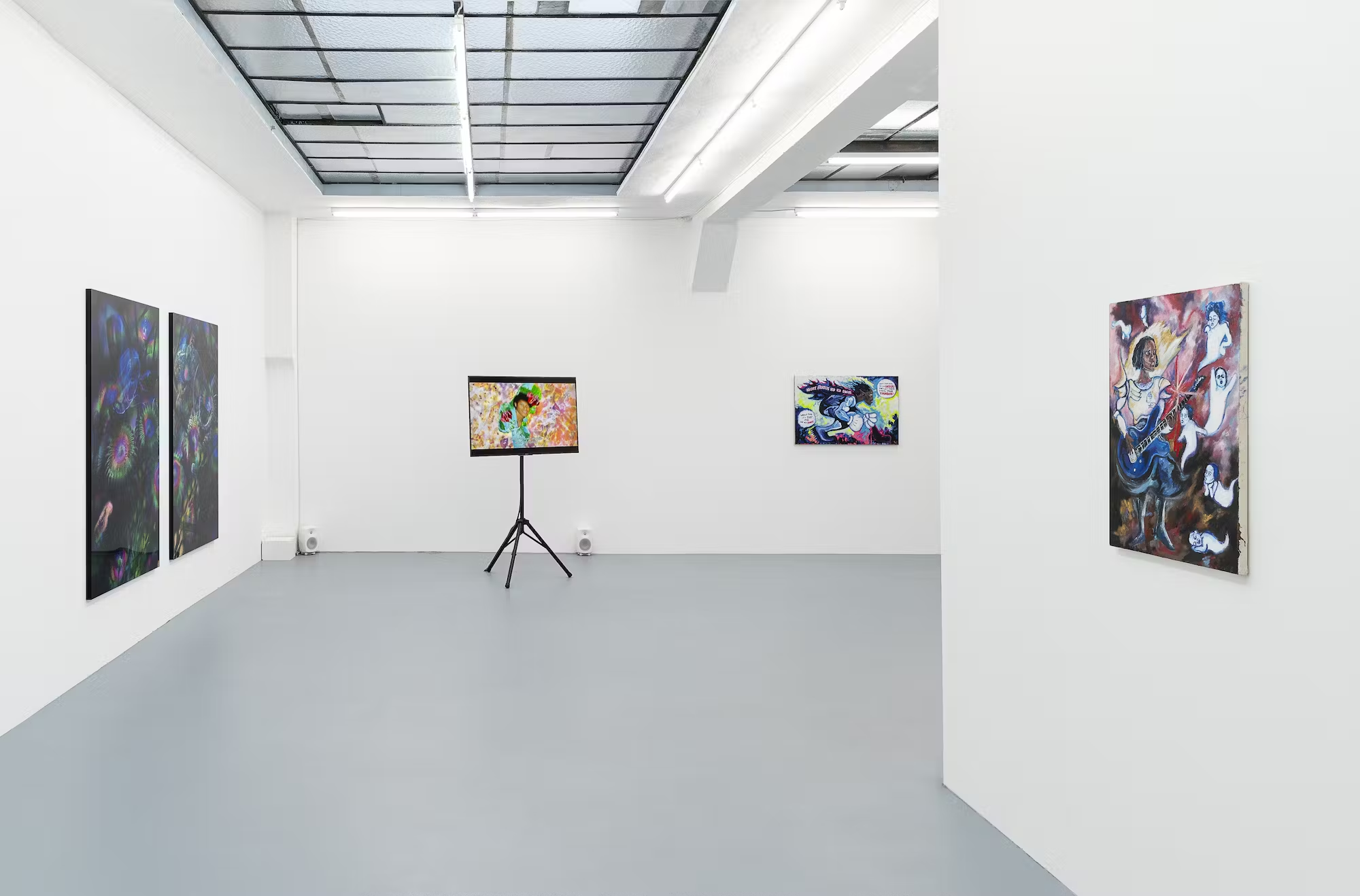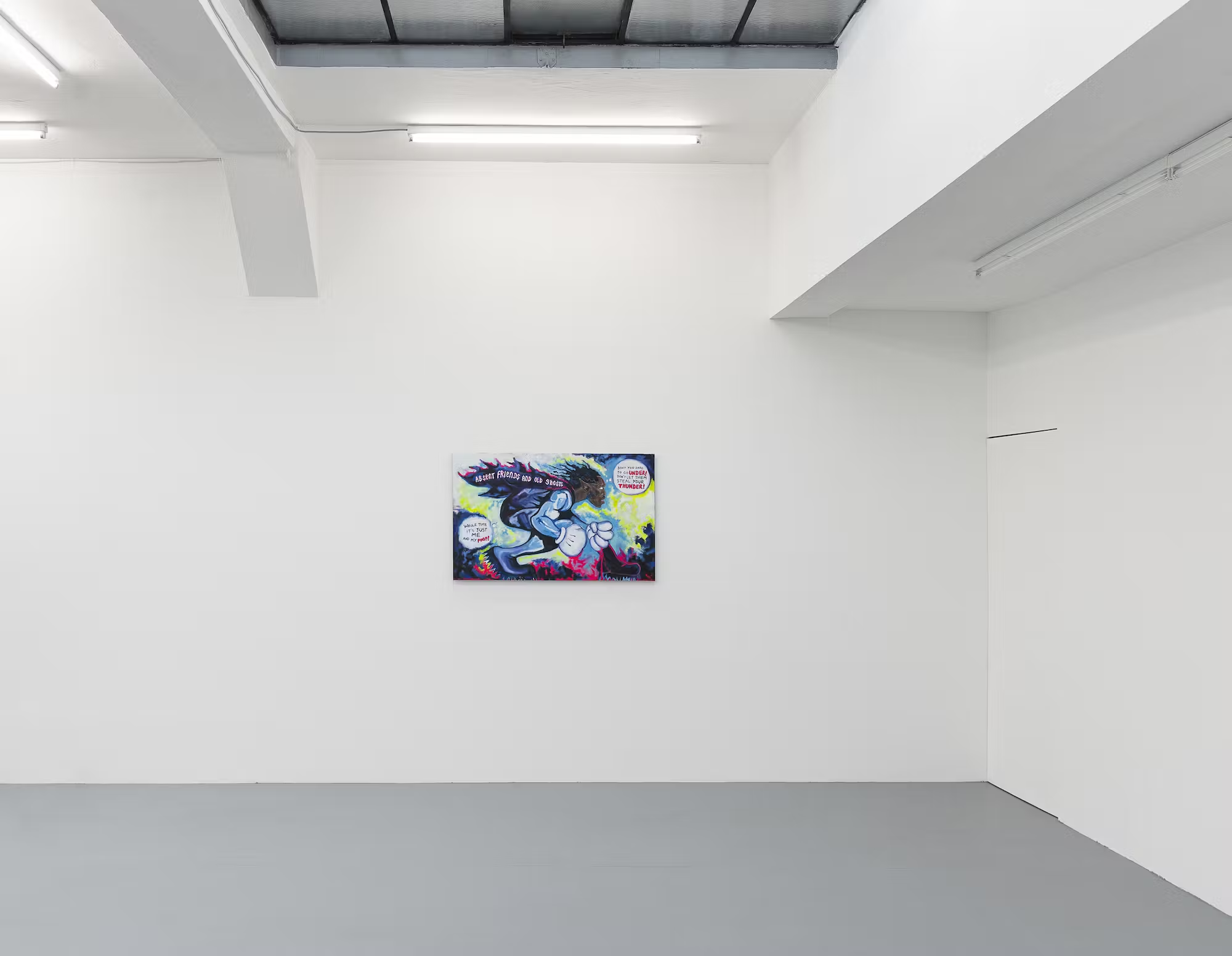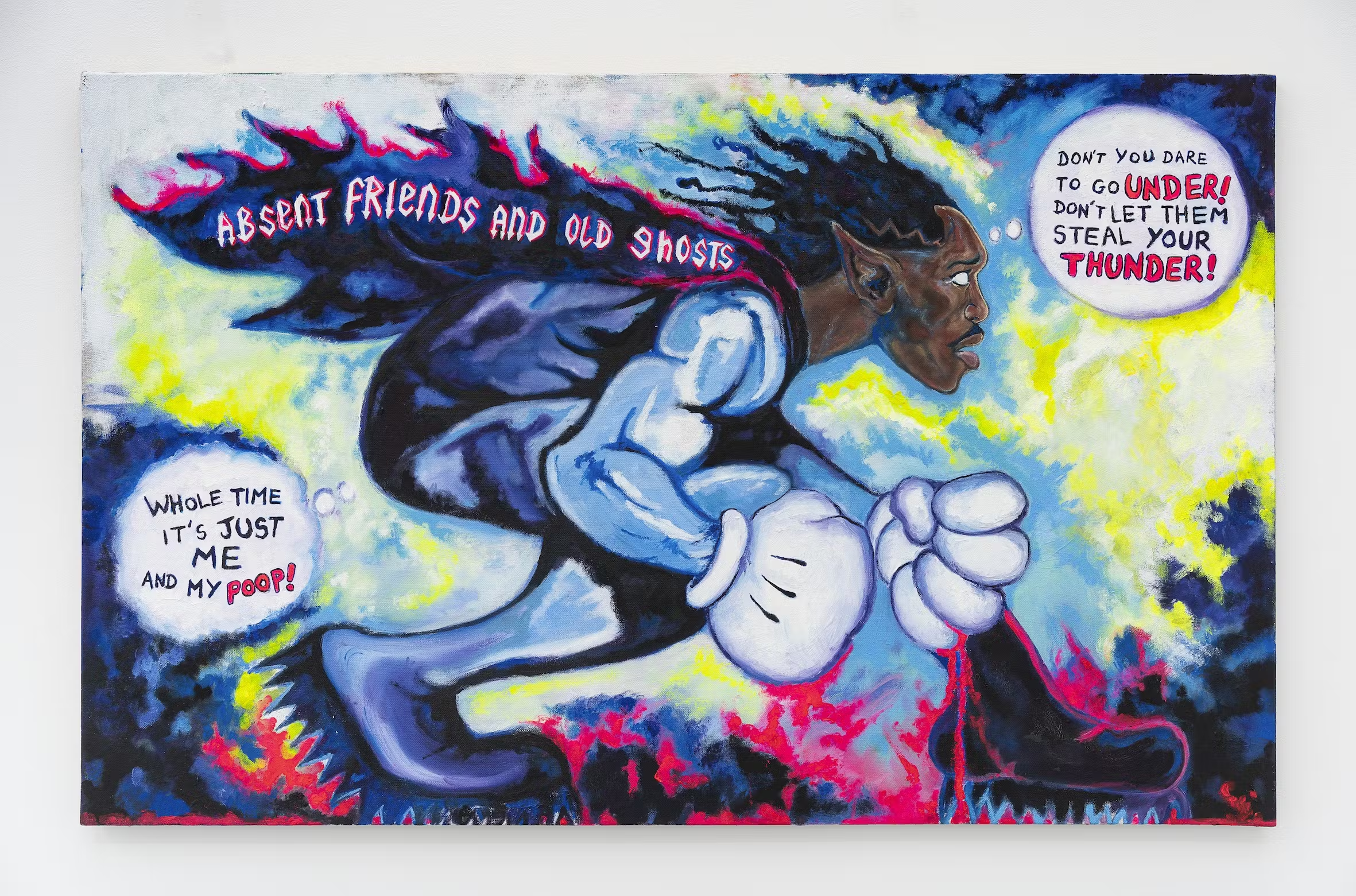Diese Ausstellung ist als Dialog zwischen zwei Künstlern konzipiert, um Fragen der sozialen Gerechtigkeit und historischen Traumata durch persönliche Erzählungen und spekulative Fiktion zu thematisieren. In ihren Filmen und Fotomontagen kombiniert Josèfa Ntjam Referenzen zur kolonialen Geschichte, afrikanischer Mythologie und Wissenschaft, um fiktionale Räume zu schaffen und Ausdrucksformen zu nutzen, die hegemoniale Diskurse über Herkunft und Identität dekonstruiert. In seinen Gemälden fusioniert Ibrahim Meïté Sikely visuelle Sprachen, die aus klassischer Ikonographie, Comics und Videospielen entlehnt sind, um epische und fantastische Szenen zu schaffen, in denen der Künstler Geschichten von sozialen Kämpfen und marginalisierten Gemeinschaften anführt. Gemeinsam schlagen Ntjam und Sikely alternative Wege vor, um Geschichte zu schreiben und zu verstehen, indem sie persönliche Erinnerungen, Vorstellungskraft und Minderheitenerzählungen als Werkzeuge nutzen, um das Aufkommen neuer Formen des Seins und der Zugehörigkeit zu fördern.
It was (them) against the world

Installationsansicht, Josèfa Antjam & Ibrahim Meite Sikely, It was them againt the world, 2024, Nir Altman, Munchen
© Courtesy of the artist and galerie anne barrault, Paris. Foto: Dirk Tacke
Installationsansicht, Josèfa Antjam & Ibrahim Meite Sikely, It was them againt the world, 2024, Nir Altman, Munchen
© Courtesy of the artist and galerie anne barrault, Paris. Foto: Dirk Tacke
Installationsansicht, Josèfa Antjam & Ibrahim Meite Sikely, It was them againt the world, 2024, Nir Altman, Munchen
© Courtesy of the artist and galerie anne barrault, Paris. Foto: Dirk Tacke
Installationsansicht, Josèfa Antjam & Ibrahim Meite Sikely, It was them againt the world, 2024, Nir Altman, Munchen
© Courtesy of the artist and galerie anne barrault, Paris. Foto: Dirk Tacke
Installationsansicht, Josèfa Antjam & Ibrahim Meite Sikely, It was them againt the world, 2024, Nir Altman, Munchen
© Courtesy of the artist and galerie anne barrault, Paris. Foto: Dirk Tacke

